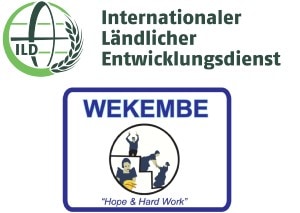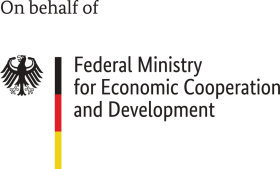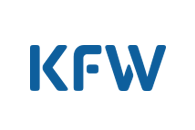Wind turbines made in Uganda

The challenge
Ugandan smallholder farmers are increasingly feeling the effects of climate change. Water shortages and droughts are increasing, making it difficult to grow crops and raise livestock. This development threatens their food security. Climate change also reduces the availability of biomass, which is an important, often the only source of energy for the rural population. Alternatives here can be renewable energies, which can make an important contribution to irrigation and electricity supply in rural areas.
The goal
To this end, the Ugandan non-profit organisation Wekembe Micro Credit Scheme (WMCS) and the German International Rural Development Service (ILD) want to set up an open source wind turbine developed by German partners. The special feature: The blades of the turbine are adjustable. Depending on the position, the turbine can pump water to higher altitudes with the help of an integrated pump or produce electricity with it. Furthermore, the partners want to train selected Ugandan craftsmen and skilled workers so that they can not only operate and maintain the turbine, but also produce and set up a wind turbine themselves using regionally available materials.
The partners
WMCS is a non-profit organisation of the Archdiocese of Kampala. For 30 years, it has been promoting integrated and sustainable development of families who are mainly engaged in agriculture, but also in trades and small businesses. The ILD has been committed to integrated rural development in Africa, Asia and Latin America since 1988. Qualification is an important component of its work. Both partners have been cooperating for 15 years and have implemented several projects co-financed by the BMZ.
In this partnership, the partners also work with the German non-profit associations Belu Ugandahilfe and Green Desert, as well as with Prof. Dr. Horst Crome from the University of Bremen, who jointly developed the open source wind turbine for pumping water and producing electricity. Dr. Musaazi from the Faculty of Technology at Makarere University is also involved in the construction of the plant near Lake Victoria.
Approach
The project is being carried out in three phases. For the prototype, the German project partners assembled the materials and necessary tools for the first wind turbine and shipped them to Uganda. In parallel, WMCS identified a site on Lake Victoria. This location is increasingly serving the organisation as a technological innovation and training centre. The partners have also established a project implementation committee, whose members engage in intensive digital exchange.
In Phase II, German experts from Belu Ugandahilfe and Green Desert travel to Uganda for up to 90 days to build the plant with local people. In addition, the project partners have formed a working group of experienced craftspeople from the region, instructors from the vocational school adjacent to the site and Ugandan university staff. Multipliers are selected from among them and trained in open source technology.
In Phase III, the wind turbine is to be erected. Once in place, an additional wind turbine will be built with the help of local suppliers and regional materials. The construction manual created in Germany will also be adapted to Ugandan conditions. This should enable the local multipliers to build their own wind turbines in the future.
Open source wind turbine for pumping water and generating electricity
Productive Use, Financing
Internationaler Ländlicher Entwicklungsdienst (ILD) e.V., Wekembe Micro Credit Scheme (WMCS)
01/01/2022 - 30/09/2023



